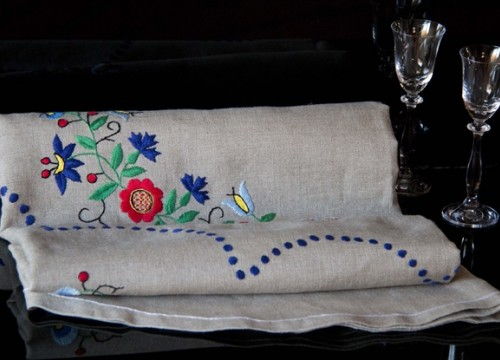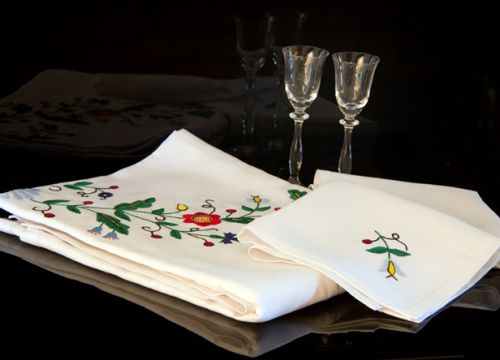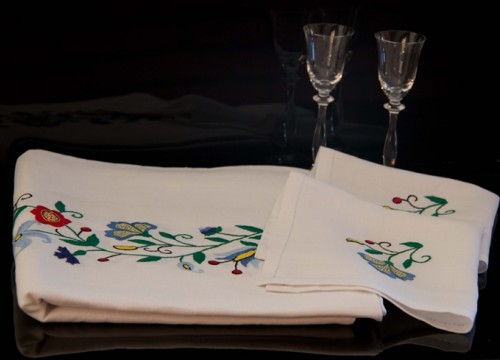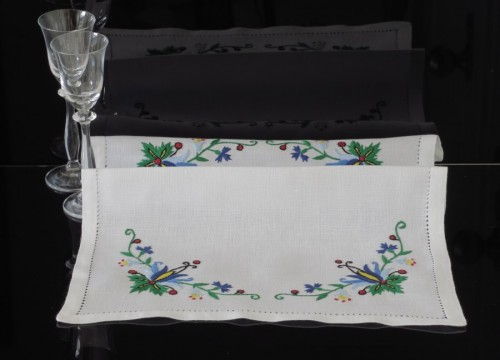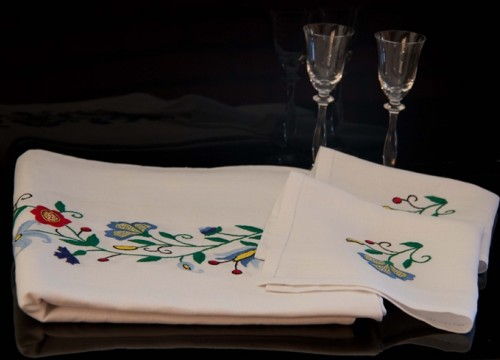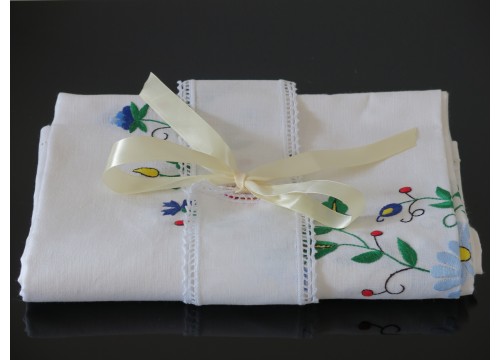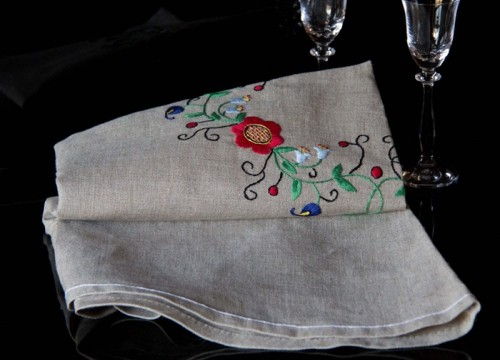
| You have no items in your shopping cart |
Transportation cost: Poland: 14 - 16 zł, Worldwide: from 22 zł

| You have no items in your shopping cart |
Hand embroidered circular tablecloth. Kashub embroidery – the pearl of the North Region. Rich floral pattern was embroidered at the central part of the tablecloth – in this pattern we can find motifs typical for Kashub embroidery: tulips, roses, sunflowers, cherries and other ornaments. It is well worth to pay special attention to the shading of embroidered branches and stems – an embroiderer achieved an interesting effect owing to the application of this kind of shading. Edges of this tablecloth are finished with delicate hemstitch. The embroidery used on the tablecloth is a combination of a traditional Wejherowo and Żuków school being a part of Kashubian embroidery using 7 colors (three shades of blue, green, yellow, red and black). This kind of embroidery is extremely labour-intensive – preparation of tablecloth of this size takes few weeks of work. Tablecloth decorated in such beautiful way will add splendour to each important celebration, it may pose also perfect wedding gift. Upon your request we will enclose an occasional card from our collection of hand-made postcards and we will write whishes.
Kashubian embroidery is inspired by the beauty of nature. Flower motives are the most characteristic: pansies, cornflower, blue-bells, carnations, lillies, forget-me-nots and roses. They are presented with unusual precision and attention to detail. In Kashubian embroidery every colour has its symbolic meaning. There are seven basic colours connected with the legend of the creation of Kashubia. The colours symbolize the elements of nature, that God used to make Kashubian land beautiful while creating it.
• cornflower blue symbolizes the beautiful Kashubian lakes,
• blue is the colour of Kashubian sky,
• dark blue is like the unmeasurable depth of sea,
• yellow reflects the colour of cereals ripening in fields and the sun,
• green stands for forests full of game,
• red is like blood that every Kashubian is ready to spill for protection of their land,
• brown and black are like soil ready for being planted.
There are various schools of Kashubian embroidery using different characteristic motives and colour schemes. The oldest is Zukow school of Kashubian embroidery. The name comes from the Norbertinian convent in Zukow, where the style was developed. The popular motives include tulip, clover, rosette and heart (filled with a checkered pattern); seven characteristic kashubian colours are used. The most atypical embroidery schools are Tuchola and Borowiec ones: instead of using the seven traditional colours, they use the shades of gold and amber (Tuchola) and gold and brown (Borowiec). Wejherowo embroidery may be recognized by the dominance of red and yellow and characteristic motives of dahlia, chryzanthemum, lilac leaves and cowberry.
The nuns from Zarnowiec in their school of embroidery, so called Puck school, use several shades of blue. They introduced into Kashubian embroidery styled elements of sea holly, nets and waves. Coif (headpiece) embroidery is an interesting variety, that used to be done with gold and silver threads on velvet. It decorated coifs, that is where it name comes from, but also waistcoats. Today it decorates doilies and tablecloths and it is made with white or yellow thread.
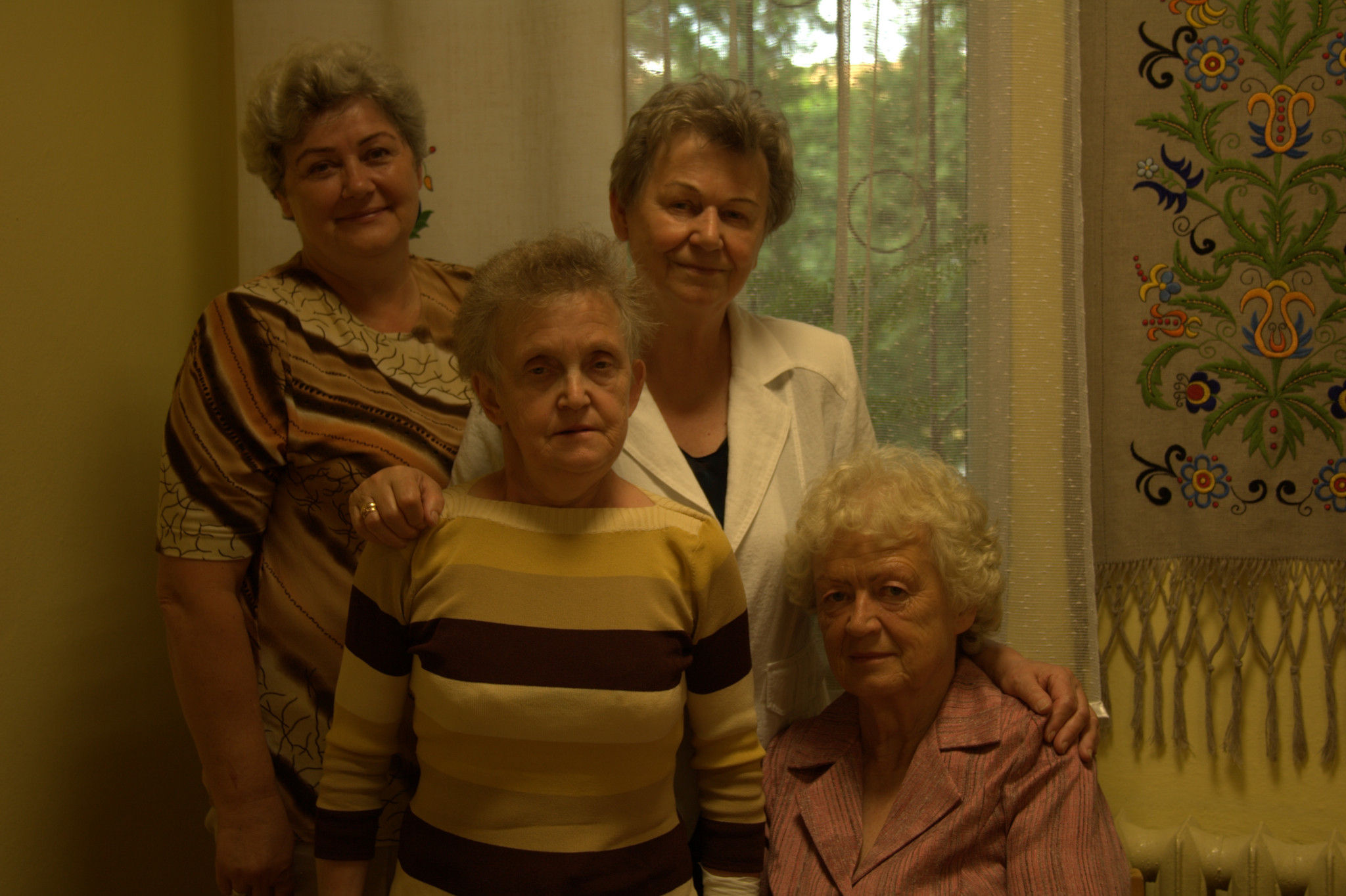

No customer reviews for the moment.
